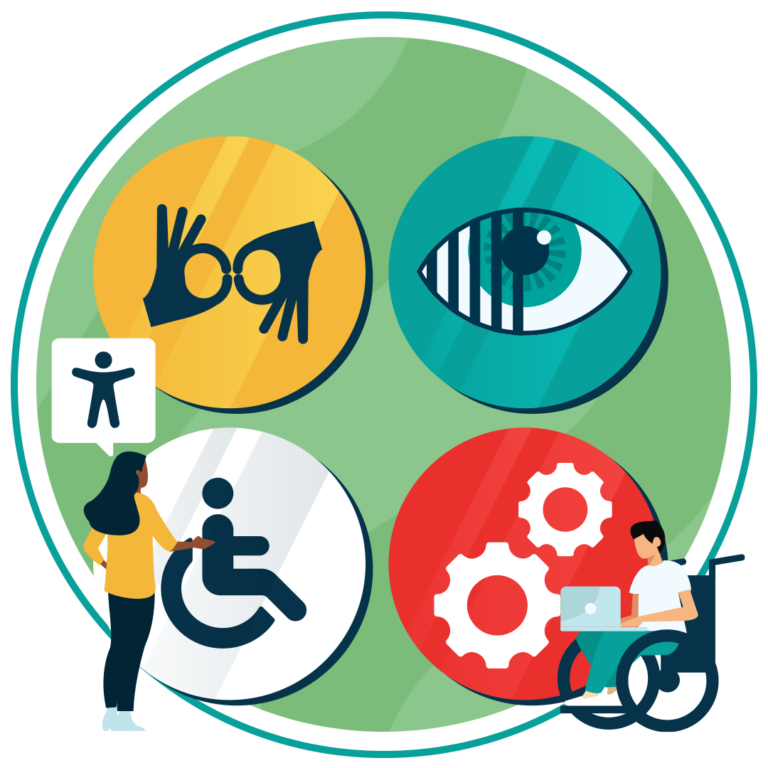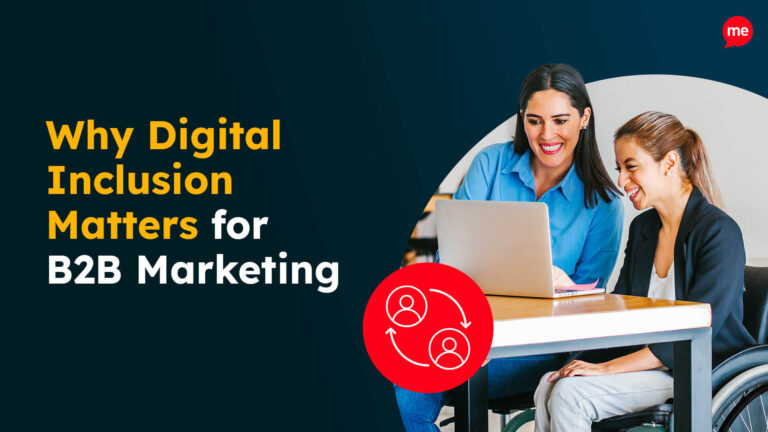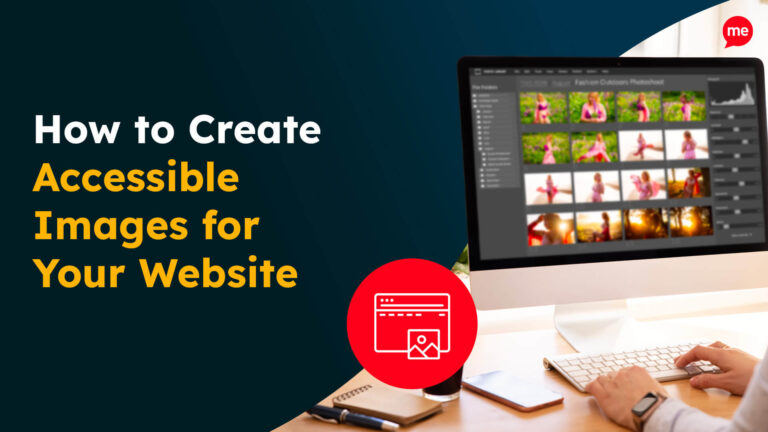Get Your Free Accessibility & Inclusion Toolkit
Download NowAssistive technology is more than just a set of tools; it represents empowerment, independence, and improved quality of life for individuals with disabilities. This article offers an insider’s look at the various types of assistive technology on the market today, exploring their different uses and users, from the small and simple to the large, complex, and digital, though each revolutionary in their own right.
What is Assistive Technology?
Assistive technology is an umbrella term that encompasses a wide range of tools, devices, and software, all designed primarily to serve individuals with disabilities. Each aid helps such individuals perform a different function that, without the technology, might be extremely difficult or even impossible.
Some tools, like magnifying glasses or shower chairs, are rudimentary by design, but serve a specific and invaluable purpose. Others, like computerised speech systems, are more sophisticated, owing to their digital nature, and possess an incredibly diverse range of applications.
But regardless of the type of aid or its level of sophistication, the goal of assistive technology is always the same: to increase, maintain, or improve the functional capabilities of individuals with disabilities, so that they can participate more wholly in all aspects of life.
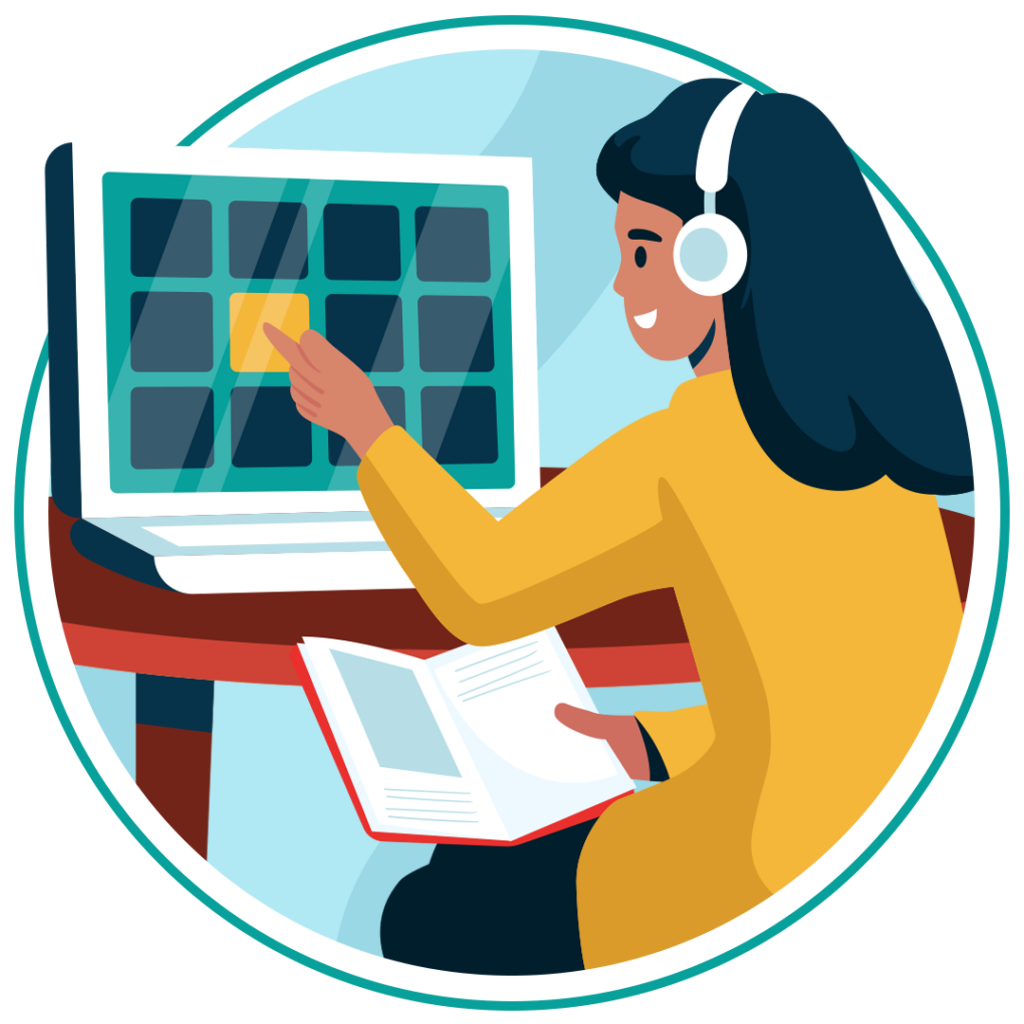
What are the different Types of Assistive Technology
Assistive technologies can be broadly categorised into three types: low-tech, mid-tech, and high-tech.
Each category differs in complexity, cost, and the level of technological integration. Low-tech assistive technology, for example, includes simple, often inexpensive tools that require little to no training. These devices are typically non-digital and often manual, designed to support basic tasks that comprise daily living. For instance, pencil grips are simple attachments that help individuals with fine motor difficulties control a pencil more easily, and grab bars, often installed in bathrooms, provide stabilising support to individuals with mobility or balance issues.
Mid-tech assistive technology includes devices that are slightly more complex, often involving some electronic components, but still relatively easy to operate. Devices like digital voice recorders or amplified telephones are classic examples of mid-tech assistive technology.
High-tech assistive technology comprises sophisticated digital devices that often involve advanced electronics or computer systems. These devices generally require training and are more costly, but offer significant benefits by way of improved functionality and independence. Speech-to-text software, for example, converts spoken words into written text, assisting those with dyslexia or writing challenges. Electric wheelchairs are another high-tech assistive technology, offering an automated, more agile alternative to the traditional wheelchair.

Free Accessibility Check of your Website
Finding accessibility issues is now easier than ever. Recite Me offers a free automated scan of your website’s homepage to highlight non-compliance. You’ll get recommendations on how to fix them, helping to improve your accessibility score.
Examples of Assistive Technologies
As society and its needs evolve, so too does technology. As a result, many different forms of assistive technology have emerged on the market in recent years. While it would be impossible to cover all of them in this article, this section seeks to outline some of the most common and impactful innovations.
#1 Screen Reader
Screen readers, are software programs that read aloud text displayed on computer screens, providing auditory output for users. This type of technology primarily serves individuals who are blind or have visual impairments. It helps them navigate the internet and digest digital content independently, allowing them to work, learn, and communicate online.
The use of Screen Readers benefits a wide and diverse range of users including those with ADHD, dyslexia, learning difficulties and other conditions. But, it goes further beyond this as this assistive technology helps old people, particularly those with vision problems. It also provides an alternative way of digesting content for everyday users, who simply prefer audio to reading.
#2 Screen Magnifying Software
Screen magnifiers are essentially the digital successor to the magnifying glass. They are used to enlarge on-screen content so that it becomes more visible for individuals with poor vision or partial sight. By magnifying text and images, screen magnifiers help users read and interact with digital content without straining their eyes, enhancing productivity and reducing fatigue at the same time.
#3 Braille
Braille is a tactile writing system designed specifically for blind people or those with severe visual impairments. It consists of raised dots, sensitive to the touch, which represent letters, numbers, and punctuation marks. Rather than use sight, braille allows users to read books, labels, signs, and many other day to day materials, using nothing other than touch.
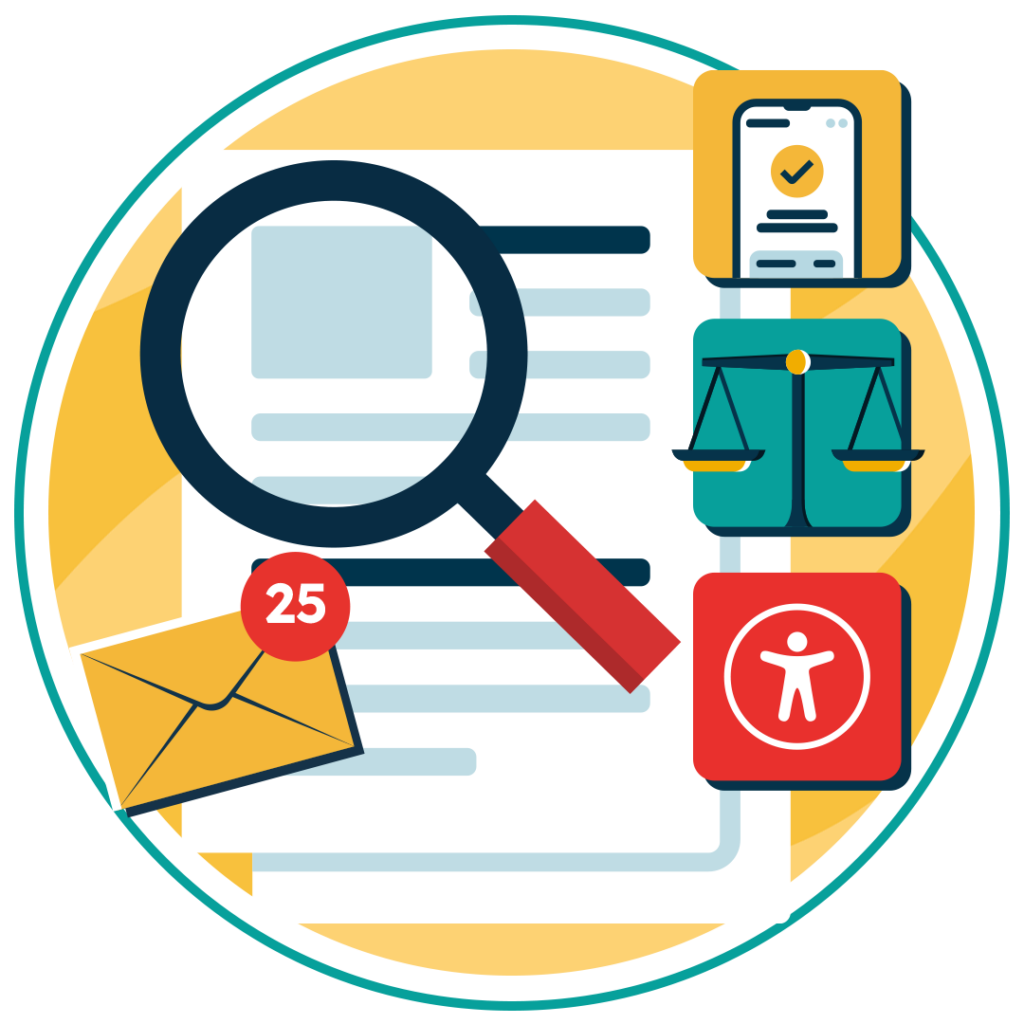
This not only promotes literacy but independence too, as users no longer have to rely on someone else reading text aloud for them. Braille displays for computers also exist, granting blind people access to digital content as well.
#4 Eye-tracking Devices
Eye-tracking technology is a truly groundbreaking invention, allowing users to control a computer or communication device using only their eye movements. These types of devices serve individuals with severe physical disabilities, such as those caused by ALS (Amyotrophic Lateral Sclerosis) or spinal cord injuries. Often, users of this high-tech assistive technology will be paralysed and unable to write or generate speech.
Eye-tracking devices therefore offer a means of communication for those individuals who cannot use traditional input devices like keyboards or mice, greatly enhancing their ability to navigate the modern world and improving their quality of life. You can learn more about how assistive technology works for communication here.
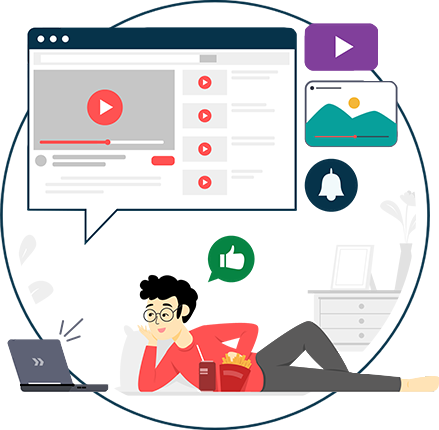
#5 Video and Image Alternatives
Video and image alternatives provide ways for visually impaired people to digest visual content. For videos, this often consists of descriptive audio, and for images, alt text descriptions which can be read aloud by screen readers.
By providing audio descriptions and text alternatives, these technologies make visual media accessible, allowing users to understand and enjoy content that would otherwise be inaccessible.
#6 Mouse Alternatives
Mouse alternatives include devices like trackballs, joysticks, and head-controlled mice that provide different methods of cursor control. They are designed for individuals with motor impairments who find traditional mice difficult or impossible to use.
The range of mouse alternatives on the market today accommodate for various different forms of physical limitations and provide customised ways of interacting with computers. This tears down accessibility barriers to digital content, giving those with mobility challenges unhindered access to computers and their many functions.
#7 Wheelchairs
Wheelchairs are one of the most common and well-known types of mid-tech assistive technology, providing mobility for individuals who cannot walk or have limited walking ability. This includes those with multiple sclerosis, cerebral palsy, and spinal or leg injuries.
Both manual and electric models exist, giving disabled people their independence and allowing them to move freely without support. Given how central mobility is to the completion of so many day-to-day tasks, wheelchairs have an incredible impact on the quality of life of their users.
#8 Colour Contrast Changers
Software that adjusts the colour contrast of digital content to improve readability is known as colour contract changers. They are used by individuals with visual impairments, particularly those with colour blindness or poor vision, to view content more clearly and without straining their eyes.
Our 40-page Digital Accessibility & Inclusion Toolkit helps businesses break down online barriers and make a real impact. It offers practical advice on all aspects of digital accessibility, from writing an accessibility statement to accessible website tips and inclusive hiring.

Examples of Assistive Technology in the Workplace
A vast number of assistive technologies can be implemented in the workplace to help create inclusive environments, where employees with disabilities can perform their jobs effectively and independently of support from others. This section outlines some of the most common examples:
- Ergonomic Furniture: Ergonomic chairs, desks, and accessories are a low-tech form of assistive technology designed to provide comfort and support to employees with chronic pain or physical disabilities. They afford employees a certain level of basic comfort at work, improving their overall wellbeing and allowing them to continue to be productive.
- Real-Time Captioning: A high-tech assistive technology that provide instant text translations of spoken language during meetings or presentations. For those with hearing impairments, this type of assistive technology works wonders; the real-time text transcriptions allow employees to participate fully in meetings without much hindrance at all.
- Accessible Software Applications: Software applications designed with accessibility features, such as customisable font sizes, colour contrasts, and keyboard shortcuts, accommodate a range of disabilities. A prime example of this is Recite Me’s accessibility toolbar software, which is installed onto organisations’ websites so that visitors can customise their site in whichever way works best for them; through reading aids, screen readers, translations, and more.
- Remote Work Tools: Tools such as video conferencing software and cloud-based collaboration platforms, enable employees to work from home or other accessible environments. These tools are invaluable for employees with mobility issues or those who require a flexible work environment. By catering to their needs, employers see indirect benefits through increased job satisfaction and greater productivity.
Examples of Assistive Technology in the Classroom
Assistive technology is part and parcel of creating inclusive educational environments in the modern world. It ensures that no student is left behind by providing equal access to learning opportunities, whether that be through learning materials, resources, or access to educational facilities. This section discusses some of the most common examples of assistive technology and its uses in the classroom:
- Text-to-Speech Software: Converts written text into spoken words so that students who have reading difficulties, autism or dyslexia can access online written content audibly. Comprehension of written text is crucial to be able to complete daily tasks within academia, so having this kind of technology available to students is absolutely vital to safeguarding their learning outcomes.
- Adaptive Keyboards: These have customisable layouts and larger keys than their more traditional counterparts, making them easier to use for students with motor impairments. In the classroom, this means that students with physical disabilities are able to type and interact with computers more effectively, resulting in better engagement during lessons.
- Speech Recognition Software: This software is a type of assistive technology that converts spoken language into text, benefiting students with writing difficulties or motor challenges which affect their ability to type. Students are not disadvantaged when tasked with written assignments as a result, leading to better all-round academic performance.
- Digital Whiteboards: Act as large interactive displays that connect a computer to a projector, allowing teachers to plan interactive lessons that students can engage with using touch or specialised input devices if they have difficulties drawing or writing. For students with visual impairments, digital whiteboards can be used to display content in larger fonts or high-contrast colours. Some even come with customisable software which can be tailored to meet specific student needs, such as text-to-speech software or audio descriptions of visual content.
- Hearing aids: Amplify all sounds around them so they are better able to hear their teachers, their peers, or even the school bell. This type of assistive technology helps facilitate teacher-student communications. And, when students are clear on the task at hand, they are more likely to do a better job at completing it, leading to greater academic results. Without such devices, the opposite may happen, where students with hearing impairments become despondent and begin participating less in classroom activities.

Add Assistive Technologies to your Website with Recite Me
Want to leverage the many benefits of assistive technologies? Then make a start today with the Recite Me assistive toolbar, which integrates with your website and offers a variety of assistive tools. With tools including the likes of a text-to-speech, magnifier, contrast changer, translation software and much more.
- Contact our team for more advice on assistive technology.
- Find out more about the Recite Me Assistive Toolbar.
- Schedule a free demonstration of how our assistive toolbar can help you.
- Run a free scan of your website for WCAG 2.1 AA compliance.
